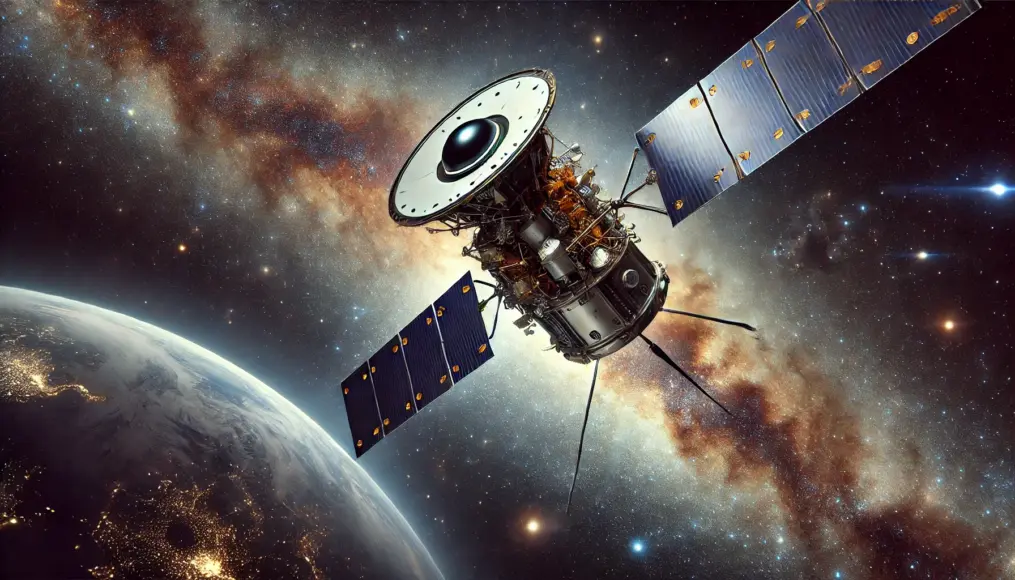The universe might be home to civilizations far beyond our imagination.
How can we measure their intelligence and technological advancements?
Previous methods have had their limitations.
However, a groundbreaking new theory offers a more accurate way to gauge the level of alien civilizations.
This theory could significantly increase the likelihood of detecting extraterrestrial life and serves as a crucial step toward unraveling the mysteries of the universe.
- Overview of the new theory for measuring alien civilizations
- Differences from traditional methods and its innovations
- Concrete possibilities for identifying extraterrestrial life
- Perspectives that pave the way for the future of space exploration
- Methods of Measuring Extraterrestrial Civilizations in the Past
- The Emergence of a New Measurement Method
- The Significance of Evaluating the Intelligence Levels of Extraterrestrial Life
- The Future of Science and Possibilities for Cosmic Civilizations
- A Revolutionary New Theory to Measure the Civilization Level of Extraterrestrials
Methods of Measuring Extraterrestrial Civilizations in the Past
Efforts to classify and measure alien civilizations have greatly stimulated human intellectual curiosity.
Among these, Kardashev’s classification is the most well-known, measuring the development of extraterrestrial civilizations based on the “amount of energy utilization” in a simple and clear manner.
This method is straightforward and easily understood, providing a foundation for scientific discussions.
However, I believe it falls short of fully explaining the complexities of modern civilizations. Shouldn’t we also consider intelligence and culture alongside technological advancement?
Kardashev’s Classification and Its Background
Kardashev’s classification was proposed in 1964 by Russian astronomer Nikolai Kardashev.
This system divides civilizations into three levels: Type I, Type II, and Type III, based on their energy utilization on planetary, stellar, and galactic scales, respectively.
For instance, a Type I civilization can fully utilize the energy of its planet, and Earth’s civilization is believed to be approaching this stage.
On the other hand, Type II and Type III civilizations would require technology far beyond our imagination, akin to something from the realm of science fiction.
Challenges in Achieving a Type I Civilization
Earth’s civilization is steadily moving toward achieving Type I status.
The efficient use of energy and the development of sustainable energy sources are key to this achievement.
However, challenges like climate change and resource depletion stand as obstacles to our progress.
In my opinion, overcoming these challenges will require not just technological innovation but also a strong ethical foundation and a spirit of collaboration.

Comparisons with Other Metrics
While Kardashev’s classification is a groundbreaking approach, its sole focus on energy utilization presents limitations.
Experts argue that it is insufficient as a measure of social progress, intellectual evolution, and technological diversity within a civilization.
For example, some have proposed metrics based on communication technology and information processing capabilities.
Personally, I believe these perspectives could offer a clearer picture of the overall scope of a civilization.
New Proposals for Measuring Intellectual Evolution
To evaluate intellectual evolution, elements such as the arts and cultural heritage produced by a civilization should also be considered.
This approach would allow us to understand not just technological progress but also the goals and aspirations of the civilization.
Indicators of intellectual evolution might serve as a guide to assess how a civilization pursues self-improvement and sustainability.
From this viewpoint, I believe Earth’s civilization should also reassess its diversity and values.

The Role of Space Exploration Capability
There is also a growing call to include space exploration capability in the classification of extraterrestrial civilizations.
This capability serves as a key indicator of whether a civilization possesses the technology to reach other planets or star systems.
Space exploration demonstrates a civilization’s ability to take on challenges beyond its environment and open up new possibilities.
When considering this aspect, doesn’t it seem that humanity’s bold ventures into space are the key to unlocking our future?

The Emergence of a New Measurement Method
A new perspective has been proposed that surpasses Kardashev’s classification as a standard for measuring space civilizations.
This method considers multiple aspects, including energy consumption, knowledge sharing, technological efficiency, and social factors.
As a result, the traditional idea that civilizations consuming vast amounts of energy are advanced is being reevaluated.
Notably, civilizations emphasizing sustainability are receiving higher evaluations, which is a significant shift in perspective.
Technological Efficiency and Energy Management
Under the new standard, the ability to efficiently use energy becomes a critical factor.
For example, the utilization of renewable energy and advancements in waste management technologies are key indicators of a civilization’s progress.
This approach values not only the consumption of energy but also its optimized usage without waste.
Such criteria can also be applied to modern Earth civilizations, offering us new perspectives.

The Role of Technological Innovation
As technological innovation progresses, the transformation of energy management plays a crucial role in the evolution of civilizations.
For instance, advancements in quantum computing and the optimization of energy efficiency through artificial intelligence are gaining attention.
These technologies are expected to significantly impact the criteria for measuring space civilizations.
Modern science seems to hold the key to advancing to the next stage of evolution.

Comparing Earth and Space
While Earth’s civilization is still evolving, comparing it to other space civilizations helps us understand our position.
Applying this new measurement standard clarifies the direction we should aim for.
Such comparisons with the cosmos suggest our potential for growth and progress.
Understanding the commonalities and differences between known and unknown civilizations is an essential step forward.

Knowledge Sharing and Information Transmission
The ability to efficiently share information and communicate it to other civilizations is also part of the new standard.
This aspect is considered more critical than mere energy use.
The extent to which knowledge is accumulated and passed on to future generations serves as a key indicator of a sustainable civilization.
It prompts us to reflect on how human technologies can evolve and contribute to our cosmic role.

Collaboration with Other Civilizations
The ability to share knowledge is also crucial in building cooperative relationships with other civilizations.
Joint interstellar research and the fusion of technologies open new avenues for development.
This resembles the international scientific collaborations established on Earth.
From this perspective, Earth’s role in the space era becomes clearer.

Advances in Communication Technology
Advancements in technologies like light-speed communication and quantum communication could dramatically enhance knowledge sharing.
This progress might help bridge gaps between civilizations.
How will these technological advances impact humanity’s future?
Could they enable dialogues with space civilizations?

Evaluation of Social Factors
The sustainability and fairness of a civilization’s social structure are also part of the new standard.
This approach not only values technological development but also prioritizes the quality of life and welfare of the people.
Such a perspective offers many lessons for our Earthly societies.
How can we enhance the sustainability of our social structures?

The Significance of Evaluating the Intelligence Levels of Extraterrestrial Life
Evaluating the intelligence levels of extraterrestrial life holds profound meaning beyond mere scientific curiosity.
It is an attempt to redefine our place in the universe.
By assessing the existence of intelligent life forms, we aim not only to seek potential contact with extraterrestrial beings but also to reconsider the development of our own civilization.
Furthermore, the discoveries brought about by this evaluation could significantly influence our future choices.
Humanity’s Scale of Civilization
The Kardashev Scale, used to measure civilizations in the past, focused primarily on physical criteria like energy consumption.
However, evaluating extraterrestrial civilizations may reveal critical elements missing from these criteria.
For example, factors like ethics and social structures, which cannot be measured by technological progress alone, need to be considered.
Through this, a new model of civilization for humanity might emerge.
A New Relationship Between Technology and Ethics
The balance between advanced technology and ethical awareness could become a new standard for measuring civilization maturity.
Which is more advanced: a civilization with cutting-edge technology but ethical issues or one that is ethically superior with limited technology?
This question is equally significant for us and could serve as a guideline for future technological development.
Reflecting on extraterrestrial civilizations also highlights challenges facing Earth’s civilization.

The Possibility of Coexistence With Extraterrestrial Life
Evaluating the intelligence levels of extraterrestrial civilizations is a crucial step in determining whether we can coexist in the universe.
Specifically, the potential for mutual understanding between civilizations with differing intelligence levels will become a focal point of future research.
We must go beyond measuring their technological capabilities or energy usage and strive to understand their culture and values.
This requires a comprehensive approach, combining science, philosophy, and the humanities.
Models of Coexistence on Earth
Just as societies with different cultures and values coexist on Earth, mutual respect for diversity will be key in relationships with extraterrestrial civilizations.
Expanding Earth’s lessons on coexistence to a cosmic scale could lead to peaceful coexistence models with alien civilizations.
The lessons learned on Earth can offer valuable insights for interactions with other civilizations.
Striving for coexistence may be the first step toward unraveling the mysteries of the universe.

The Importance of Understanding the Universe’s Civilizational Levels
Understanding the levels of civilization across the universe is key to learning how we exist as part of it.
This is not merely a scientific endeavor but a journey to discover the universal rules of life.
With a deeper understanding, humanity can reassess its role within the greater cosmos.
Such a perspective might illuminate the path we should take toward the future.
Universal Rules of Life
Comprehending the universal rules of life can help us predict how life evolves and thrives.
This research, assuming potential contact with extraterrestrial life, holds the potential to redefine the meaning of life itself.
Discovering unknown mechanisms of life’s evolution may open new doors to the future for humanity.
What discoveries lie beyond those doors? The intrigue is unending.

The Future of Science and Possibilities for Cosmic Civilizations
The new method of measuring extraterrestrial civilizations represents a significant step forward in integrating our science and philosophy.
Unlike past methods that focused solely on energy consumption, the current approach aims to comprehensively understand the evolutionary processes of civilizations.
This shift challenges our preconceived notions about the universe and opens new possibilities for interaction with extraterrestrial life.
The Future Unveiled by Scientific Advancements
The new measurement method is expected to greatly accelerate scientific progress.
For example, advanced artificial intelligence and big data analysis could make detecting signs of extraterrestrial civilizations more efficient.
These advancements would not only confirm the existence of civilizations but also help us understand their culture and ethics.
It’s exciting to envision how science can expand our understanding.
The Evolution of Space Communication
The evolution of communication technologies is a critical component of this new approach.
Current Earth-based communication technologies often struggle to detect faint signals from space.
However, developments in quantum communication and next-generation antenna technology could overcome these challenges.
Such innovations may even enable direct dialogue with extraterrestrial civilizations.

Advancements in Exploration Technology
Exploration technology also plays a pivotal role.
Next-generation space probes and robots could enable access to previously unreachable areas.
In particular, resource exploration on extraterrestrial planets and moons may hold the key to contact with cosmic civilizations.
These advancements are bound to lead to groundbreaking discoveries.

The Vision of Collaboration with Cosmic Civilizations
Collaborating with extraterrestrial civilizations offers limitless possibilities.
Such collaboration could significantly enhance our technological capabilities.
Additionally, learning from civilizations that have evolved along different paths could provide new perspectives on human social systems and ethics.
This vision inspires rich discussions both scientifically and philosophically.
Shared Goals as the Foundation
Having shared goals between extraterrestrial civilizations and humanity is essential for collaboration.
These could include efficient use of space resources or forming agreements to maintain peace across the galaxy.
By sharing such objectives, diverse civilizations can complement each other and grow together.

The Impact on Humanity’s Future
The new measurement method will likely influence humanity’s future as well.
Understanding the evolution of extraterrestrial civilizations could offer insights into solving challenges faced by our own civilization.
In this way, the future brought about by scientific advancements is filled with endless possibilities.
Applications for Earth’s Environment
Research on extraterrestrial civilizations could also benefit Earth’s environment.
For example, it may lead to new solutions for energy issues and climate change.
This perspective underscores the importance of conducting research that considers not only space but also Earth.

A Revolutionary New Theory to Measure the Civilization Level of Extraterrestrials
Many theories have been proposed to measure the level of extraterrestrial civilizations.
However, the new method introduced here goes beyond traditional frameworks, evaluating the diversity of cosmic civilizations and expanding the possibilities of future science and technology.
Through this theory, we can gain fresh insights into the connection between the universe and Earth.
Could this new measurement method be the key to unlocking the mysteries of the universe?
What are your thoughts? Please share your opinions in the comments section!




Comment